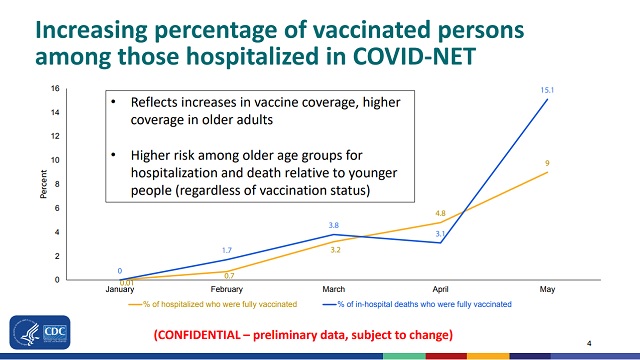I found the above meme on Facebook, and reposted it on Twitter. I should relaly not have been surprised, but I got quite a bit of negative reaction from people saying I was spreading disinformation. But I think it's essentially true,
1. Donald Trump and every other living US president.
That's Biden, Trump, Obama, Bush, Clinton and Carter.
Article: Published March 1, 2021
Updated April 17, 2021
Former President Donald J. Trump and his wife, Melania, quietly received coronavirus vaccinations in January before leaving the White House, an adviser said on Monday.
Article: Jan 11, 2021
Joe Biden on Monday received the second dose of the Pfizer/BioNTech Covid-19 vaccine on camera, as part of an effort by the President-elect's incoming administration to reassure the country of the safety of the vaccines.
Article: March 11, 2021
The former First Lady took to Instagram today to share that she and her husband, former president Barack Obama, got vaccinated
Article: March 18, 2021
Former President George W. Bush and former First Lady Laura Bush received their COVID-19 vaccinations at Baylor Scott & White Hillcrest Medical Center in Waco
Article: Feb 24 2021
Now that former President Jimmy Carter and his wife are vaccinated against COVID-19, they have returned to one of their favorite things: church.
Missing Clinton, but more generally:
Article: March 11, 2021
All living former Presidents Jimmy Carter, Bill Clinton, George W. Bush, Barack Obama and their respective former first ladies -- with the exception of the Trumps -- are part of a newly released ad campaign urging Americans to get the coronavirus vaccine when it is their turn, a push that is aimed squarely at combating vaccine skepticism.
2. All 50 governors, both R and D
Article: June 22, 2021
Texas Gov. Greg Abbott is vaccinated against COVID-19 — as are all other US state governors.
3. Nearly 100% of congress
This is a little tougher, as up-to-date figure are hard to find.
Article: According to a CNN survey from May, 100% of congressional Democrats and 92% of Senate Republicans had been vaccinated against Covid-19, while only 44.8% of House Republicans were.
While that's nearly 100% of the Senate, it's more like 80% overall. However many Republicans now are simply not saying what their status is. But "Nearly 100% of congress" might be a bit high.
4. 96% of American Physicians.
Article: June 11, 2021
The American Medical Association (AMA) today released a new survey (PDF) among practicing physicians that shows more than 96 percent of surveyed U.S. physicians have been fully vaccinated for COVID-19, with no significant difference in vaccination rates across regions.
5. 75-80% of the military (soon 100%)
This might initially seem to over-state the figures, as a few weeks ago they were:
Article: August 9, 2021
The Navy said that more than 74% of all active duty and reserve sailors have been vaccinated with at least one shot. The Air Force, meanwhile, said that more than 65% of its active duty and 60% reserve forces are at least partially vaccinated, and the number for the Army appears closer to 50%.
However
Article: Members of the U.S. military will be required to get the COVID-19 vaccine beginning next month
So with the 100% target set for just two weeks from now, the 75% number has probably been reached by now.
Finally the most important number:
99.2% of all people currently dying of Covid-19 (are NOT vaccinated)
Multiple sources give this figure for the unvaccinated deaths in June, usually as a quote from Dr Fauchi on Meet the Press:
Article: 07/05/21 04:42 PM EDT
Anthony Fauci on Sunday said more than 99 percent of the people who died from COVID-19 in June were not vaccinated, calling the loss of life “avoidable and preventable.”
“If you look at the number of deaths, about 99.2 percent of them are unvaccinated. About 0.8 percent are vaccinated.
However the same number came from an AP analysis of government data for May
Article: only about 150 of the more than 18,000 COVID-19 deaths in May were in fully vaccinated people. That translates to about 0.8%, or five deaths per day on average.
More detailed figures, with some discussion of the challenges, can be found At the Kaiser Family Foundation
Article: The share of deaths among people with COVID-19 who are not fully vaccinated ranged from to 96.91% in Montana to 99.91% in New Jersey. (Note: Deaths may or may not have been due to COVID-19.)
Article: Jul 30, 2021
While information on breakthrough events is still limited and incomplete, this analysis of available state-level data indicates that COVID-19 breakthrough cases, and especially hospitalizations and deaths, among those who are fully vaccinated are rare occurrences in the United States. Moreover, this data indicate the vast majority of reported COVID-19 cases, hospitalizations, and deaths in U.S. are among those who are unvaccinated or not fully vaccinated. These findings echo the abundance of data demonstrating the effectiveness of currently authorized COVID-19 vaccines.
And there's a visual breakdown of the states with data.
I think, overall, the meme
[UPDATE] However, it's out of date. As I noted below
I think it's clear that 99.2% the meme WAS an accurate figure, but no longer is, for a variety of factors. Mostly because A) more people are vaccinated, and B) highly vulnerable groups (like the 80+ group) have a very high rate of vaccination.
It's also, as other have noted, not a super useful figure, due to the complex inputs.
Last edited:

